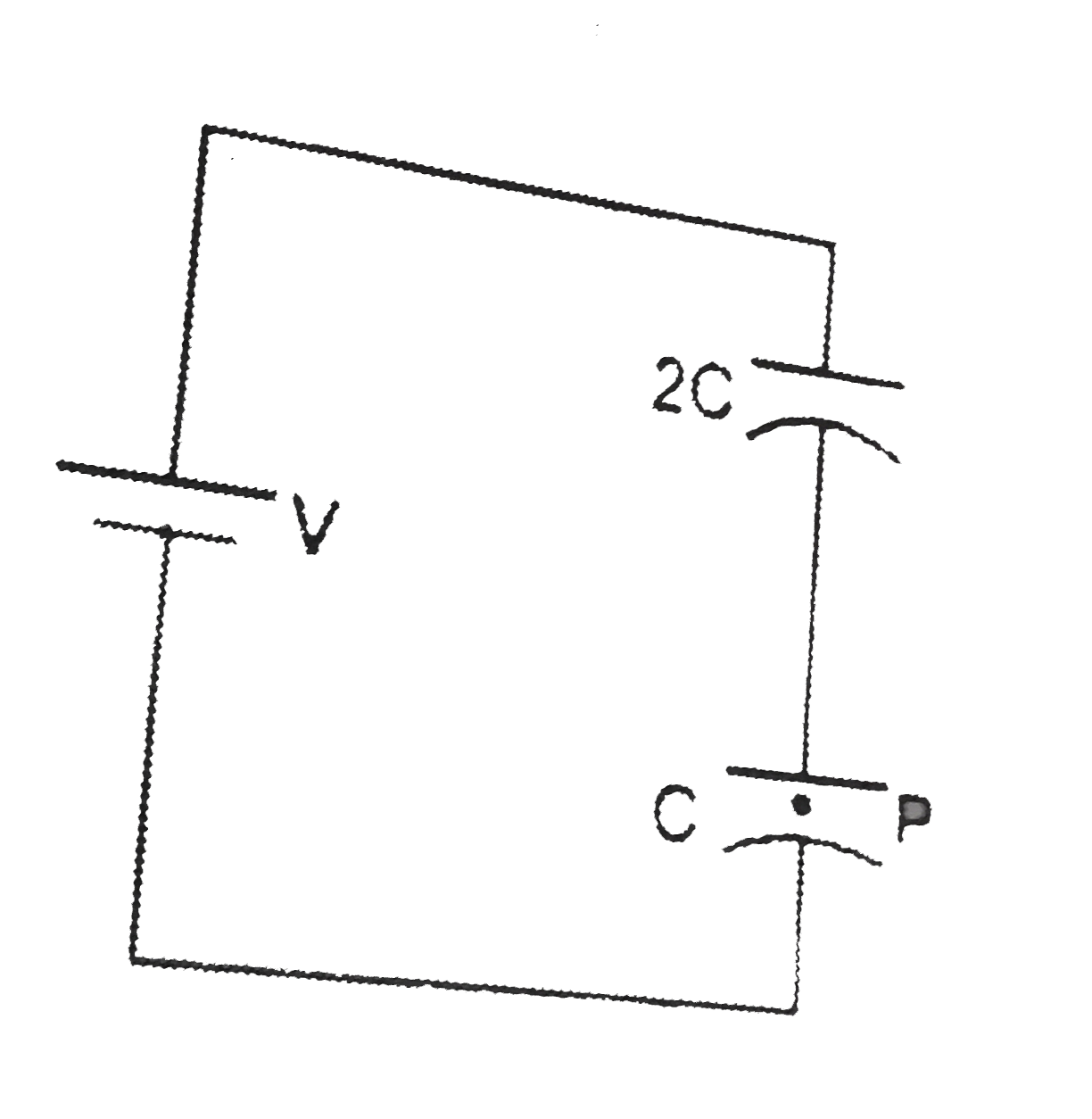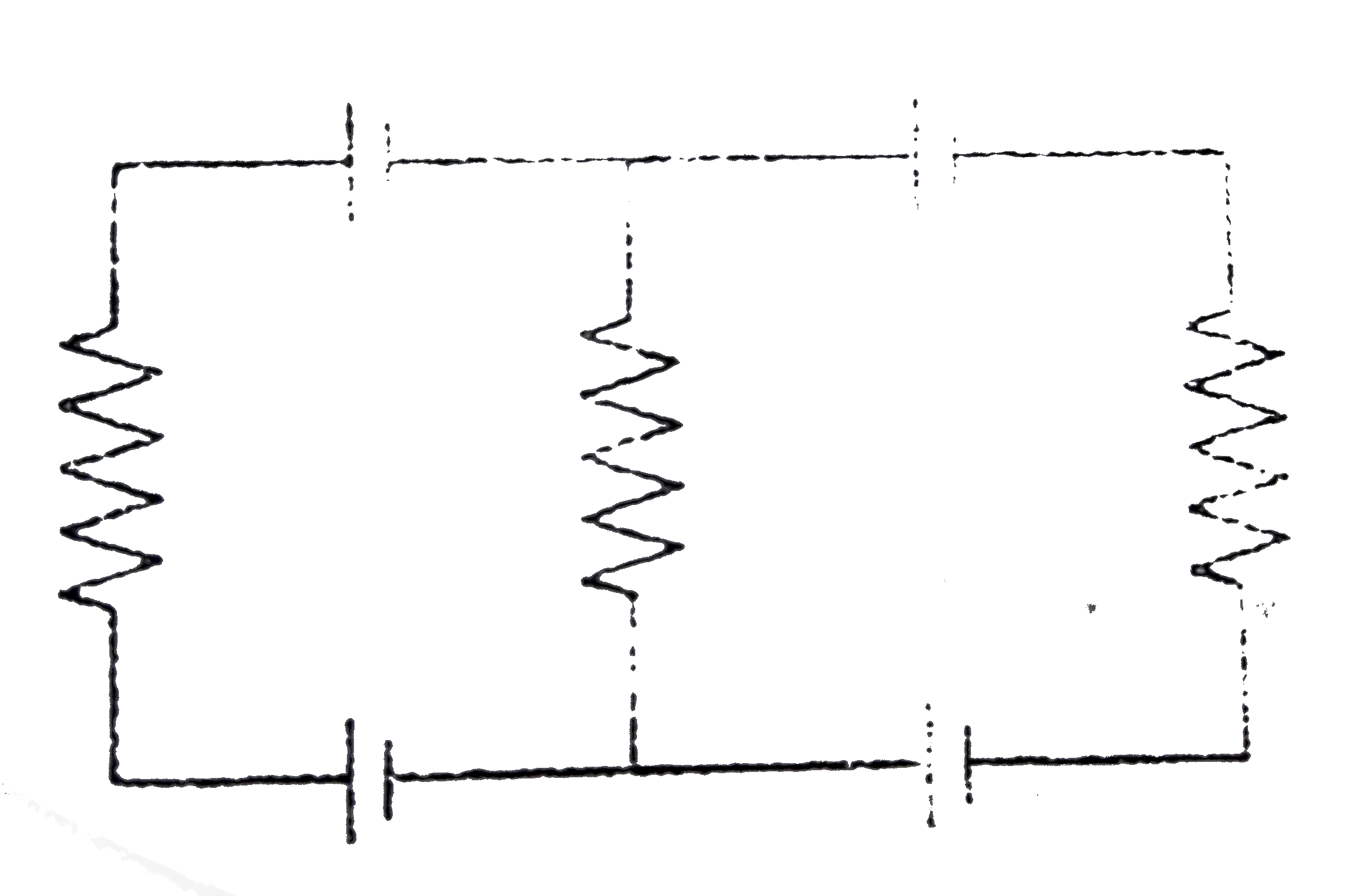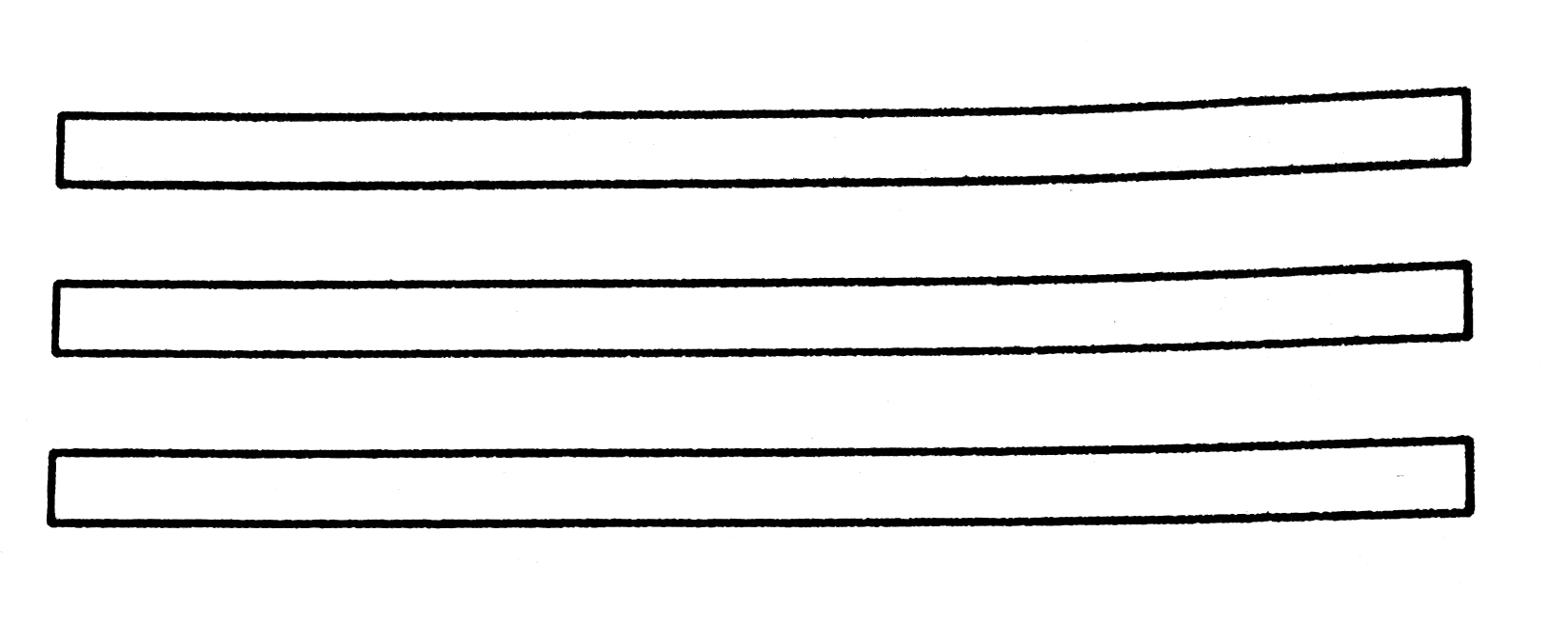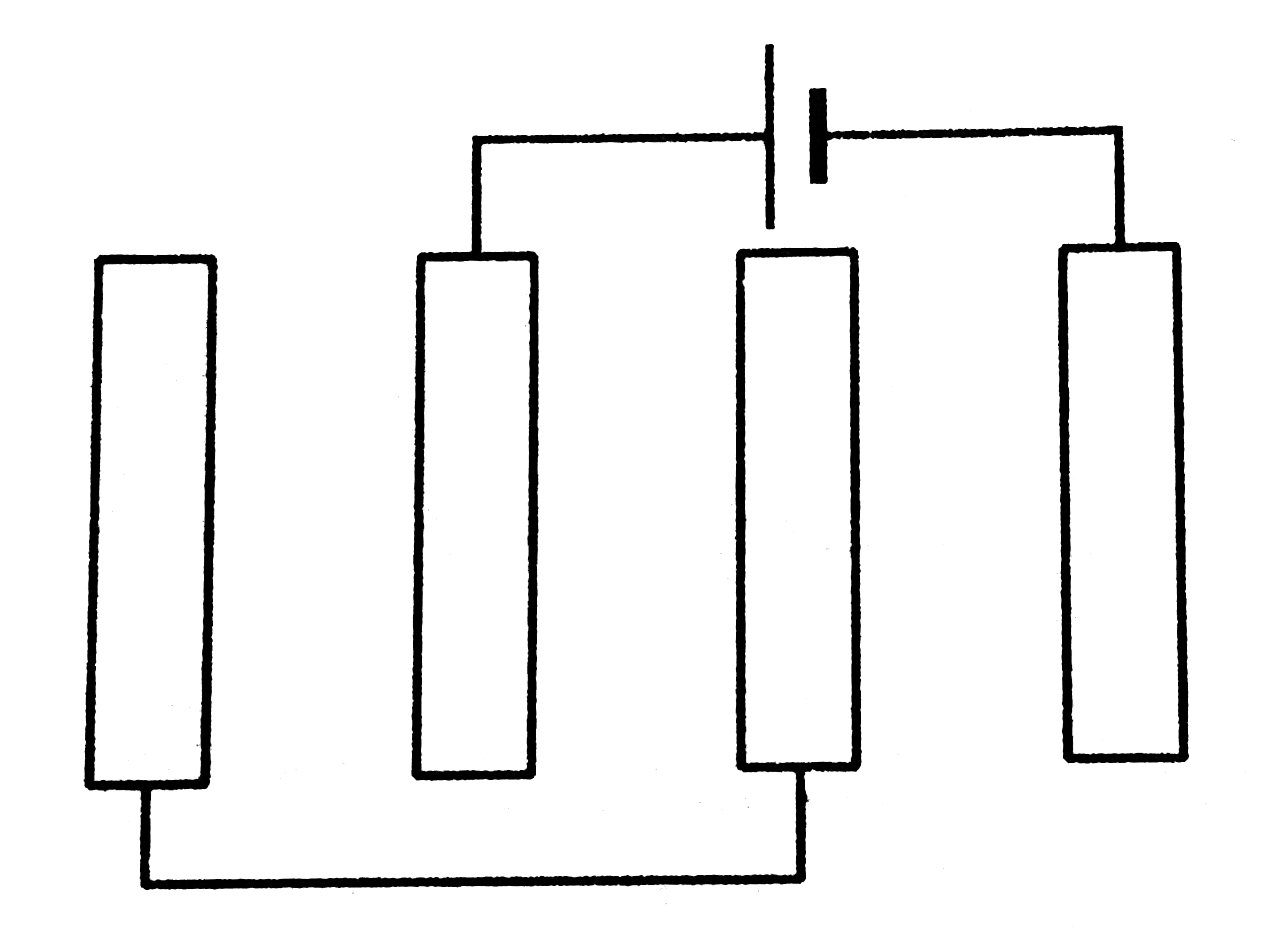The particle P shown in the figure has a mass of 10 mg and a charge of −0.01μC. Each plate has a surface area 10−2m2 on one side. What potential difference V should be applied to the combination to hold the particle P in equilibrium?

43mV
35mV
50mV
55mV
The correct Answer is:A
mg=qE, where E= electric field
or mg=qVd (where d= separation at the plates)
=qV2(∴ε0Ad=C1d=Cε0A)
or V=(2mgε)A)qC
=10−4×10×2.2×10−12×10−210−8×0.04×10−6
=10−4×9.8×8.88×10−1210−4×0.04×10−6
=43mV
Topper's Solved these Questions
- MISCELLANEOUS VOLUME 3BOOK - CENGAGE PHYSICS ENGLISHCHAPTER - MISCELLANEOUS VOLUME 3EXERCISE - Assertion and Reason Type
8 Videos
- MISCELLANEOUS VOLUME 3BOOK - CENGAGE PHYSICS ENGLISHCHAPTER - MISCELLANEOUS VOLUME 3EXERCISE - Comprehension Type
94 Videos
- MAGNETIC FIELD AND MAGNETIC FORCESBOOK - CENGAGE PHYSICS ENGLISHCHAPTER - MAGNETIC FIELD AND MAGNETIC FORCESEXERCISE - Multiple Correct Answer type
2 Videos
- MISCELLANEOUS VOLUME 5BOOK - CENGAGE PHYSICS ENGLISHCHAPTER - MISCELLANEOUS VOLUME 5EXERCISE - Integer
12 Videos
Similar Questions
The particle P shown in the figure has a mass m and a charge -q. Each horizontal plate has a surface area A potential difference V=n(mgε0A2qc) should be applied to the combination to hold the particle p in equilibrium then find the value of n.

View SolutionEach of the batteries shown in figure has an emt equal to 10V.Find the magnetic field B at the point p.

View SolutionOne plate of a capacitor of capacitance 2μF has total charge +10μC and its other plate has total charge +40μC. The potential difference between the plates is (in Volt).
View SolutionThe capacitance between the adjacent plates shown in figure (31-E20 ) is 50nF . A charge of 1.0μCis placed on the middle plate (a )What will be the charge on the outer surface pf the upper plate ? (b ) Find the potential difference developed between the upper and the middle plates .

View SolutionA parallel air capacitance 245μF has a charge of magnitude 0.48μC on each plate. The plates are 0.328mm apart.
(a) What is the potential difference between the plates?
(b) What is the area of each plate?
(c) What is the surface charge density on each plate?
View SolutionEach of the plates shown in figure ( 31- E19 ) has serface area (96ε0)×10−12Fm on one side and the seperation between the consecutive plates is 4.0 mm. The emf of the bettery connected is 10 volts . Find the magnitude of the charge supplied by the bettery to each of the plates connected to it .

View Solution
Particle P shown in figure is moving in a circle of radius R=10 cm with linear speed v=2m/s Find the angular speed of particle about point O.
View SolutionAn infinite sheet of charge has a surfaces charge density of 10−7Cm2. The separation between two equipotential surfce whose potentials differ by 5V is
View SolutionA charged partical having a charge of −2.0×10−6C is placed close to a nonconducting plate having a surface charge density 4.0 xx 10^(-6) C m^(-2). Fine the force of attraction between the particle and the plate.
View SolutionAs shown in figure a dust particle with mass m = 5.0 × 10–9 kg and charge q0 = 2.0 nC starts from rest at point a and moves in a straight line to point b . What is its speed v at point b?

View Solution
